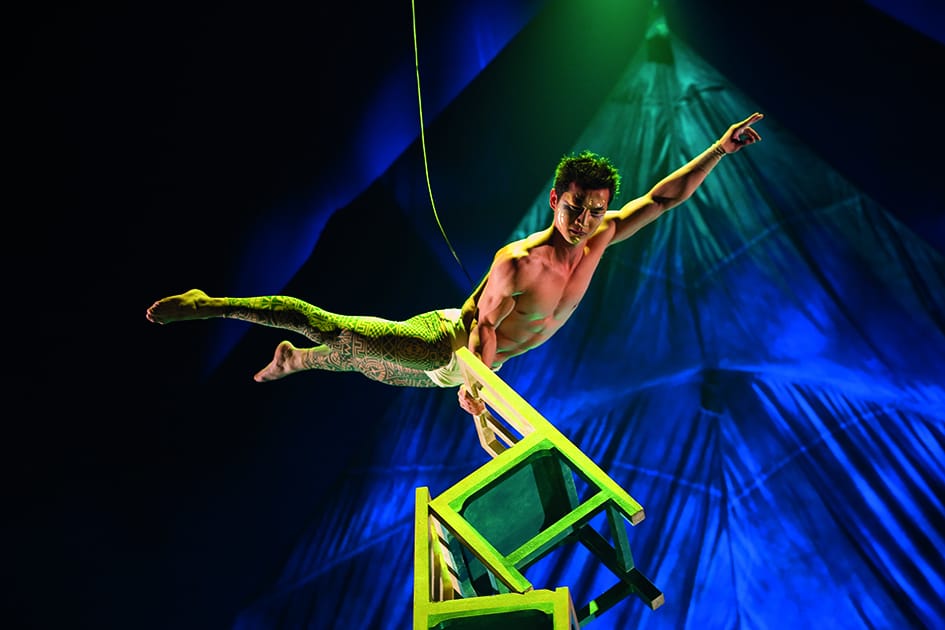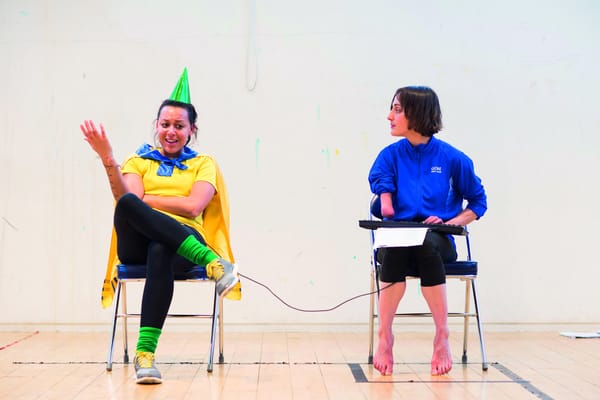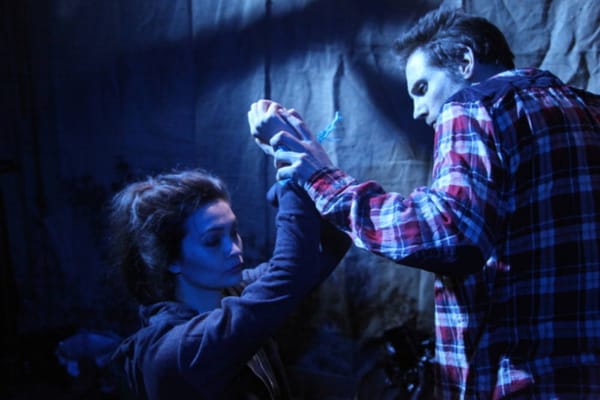Send in the Clowns — A Return to Traditional Circus
Ben Howitt reviews Cirque du Soleil’s Kooza at the Royal Albert Hall

We arrived at the Royal Albert Hall for the Friday matinee performance of Cirque du Soleil’s Kooza, and almost immediately began a mission to find somewhere to buy the programme and video recording. It turns out that the Londoner’s assumption of “oh, they’ll probably take card” does not extend to ushers on doors at theatres – and also that I get disoriented very easily in circular buildings. Nevertheless, glossy purple programme in sweaty hand, we made our way to the Grand Circle.
_Kooza _last played at the RAH in 2013, as part of its continuing world tour. It is the 20th show that Cirque has produced, and is described by Guy Laliberté, one of the company’s founders, as “the return ... to the roots of Cirque du Soleil”. David Shiner, the director, describes it as “a show ... devoted to the ‘spirit’ of the clown”.
As such, the show contains all of the circus staples: high wire, swinging trapeze, unicycles and people standing on other people (standing on a third person). It also features no less than three clowns, and a full body puppet dog that caused no end of laughter from the various school groups in attendance.
It is rare to find such a talented dancer in the circus community
The storyline follows a central character, Innocent, as he discovers the mysterious world of Kooza. Played by Stéphan Landry, he is led into a mysterious world of acrobats and wonder, controlled by the mysterious Trickster. In the second act, entrusted with the power to control the world, he discovers a more sinister and unsettling world altogether. But there is beauty here too, and during the second act, he is appointed King of the realm by one of the clowns.
Landry gives an excellent performance, and acts as the audience’s perspective on the show. His status as a clear Mary Sue is a device also used in Cirque’s feature length retrospective, Worlds Away, but it is not tired here.
The three clowns pervade the performance, and are in general very loud and slightly irritating: a quality that good clowns should aim for. Despite being stymied by a sound operator who could have been watching far more closely, they pulled off some excellent audience interaction, especially during the second half and their dance break with ‘some guy called Chris’.
However, the standout performance came from Barry Nathan Lowin as the Trickster, the ruler and controller of the world of Kooza. Effortlessly poised, and possessed of an unsettling ability to flip upside down without warning, he has been with the production since its inception in 2008. It is perhaps reasonable that he’s got his act down flat, but from his emergence from a jack in the box at the beginning to the ceremonial closing of the curtains in the finale, he is a pleasure to watch.
Lowin also proves himself as a performer in his own right as the Skeleton King in the second act. It is rare to find such a talented dancer in the circus community, and Clarence Ford’s 40s and 50s inspired choreography give him the chance to show up his compatriots in appropriate style.
Kooza, quite sensibly, uses the tradition of making sure that the ‘most stupid’ things to do happen at the beginnings and ends of acts. The beginning and end of the show are performed mostly by a single group of acrobats – the Charivari. Three-high shoulder stands and an early man-supported trampoline establish the show as classic circus.
To end the first half, we are treated to a circus staple – the high wire act, in this case involving 4 acrobats. Starting fairly lightly, with some fake fencing, runs and skipping(!) on the high wire, the act culminates in one acrobat, standing on a chair, on a pole, on two more acrobats riding bikes. On a high wire. It was unfortunate that the apparatus took so long to set up, though, and the use of a confetti cannon on various sections of the stalls didn’t do much to pass the time.
The Wheel of Death, the first acrobatics of Act 2, also disappointed me slightly. Having seen what is possible on the apparatus in the recording of Worlds Away – it’s on the US Netflix, I highly recommend having a look – it was a shame not to see any somersaults outside of the wheels. The performance, by its very nature, also lacked a strong character, and unfortunately it felt rather too much like an exhibition and not enough like a masterclass.
The range of acts is huge, and there is something for everyone
Other weaker performances were the contortion, unicycle and hoop acts. I am increasingly convinced that all hoop artists look almost exactly the same, and despite the circus adage of “those in the first few rows, may get wet”, I do feel that many within the auditorium might have wanted to see the sweat – or at least the performer’s faces.
I did, though, highly enjoy the swinging trapeze and hand-on-hand acts – and not just because they’re styles I love to watch in any forum. The acts were seamless, and the emotional love story in the hand-on-hand was truly excellent.
The Charivari return at the end to perform a teeterboard act. For those of you who don’t know, this consists of something that looks very like a children’s see-saw. An acrobat places themselves at one end, and then two to four more jump on to the other end. The flyer is catapulted 5-6 metres into the air, and flips occur. Occasionally the acrobat being thrown starts on one or two stilts.
One of my favourite aspects of the production was in the non-traditional treatment of the ringmaster. The show is started by one of the clowns, a ridiculous creature, before being superseded by the enigmatic Trickster. In a rare twist however, Innocent makes most of the decisions in the second half; indeed, by the finale the show is placed firmly into the hands of the audience.
The range of acts is huge, and there is something for everyone in the show, completing Shiner’s aims of “[revealing] the interior life af the clown… his hope, innocence, fear, solitude, joy, and above all his love”.
_Kooza _is emphatically a Western production. Despite visually engrossing costumes and set, implementing Indian and Eastern European influences, the style, character, and indeed language are agressively North American – specifically, Canadian. It leaves behind abstraction to return to the fun-loving circus of Cirque’s early days, and is well worth the price of a ticket.








